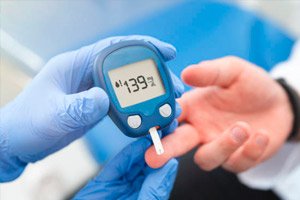
All iLive content is medically reviewed or fact checked to ensure as much factual accuracy as possible.
We have strict sourcing guidelines and only link to reputable media sites, academic research institutions and, whenever possible, medically peer reviewed studies. Note that the numbers in parentheses ([1], [2], etc.) are clickable links to these studies.
If you feel that any of our content is inaccurate, out-of-date, or otherwise questionable, please select it and press Ctrl + Enter.
Study Links 'Forever Chemicals' to Increased Risk of Type 2 Diabetes
Last reviewed: 27.07.2025
 ">
">Exposure to a class of synthetic chemicals known as per- and polyfluoroalkyl substances (PFAS) — often referred to as “forever chemicals” — may increase the risk of developing type 2 diabetes, according to researchers at Mount Sinai in a new study published in the journal eBioMedicine.
The team conducted a nested case-control study (an observational study conducted within a larger cohort study) using the BioMe database, a large research database linked to electronic medical records and including data from more than 70,000 participants treated at Mount Sinai Hospital in New York City since 2007.
Using available data, the researchers analyzed 180 people with newly diagnosed type 2 diabetes (T2D) and compared them with 180 similar people without diabetes. All participants were matched for age, gender, and ethnicity.
The scientists used blood samples to analyze levels of PFAS, a group of chemicals found in everything from nonstick cookware to stain-resistant fabrics and waterproof clothing. They found that higher levels of PFAS were associated with a significantly higher risk of developing T2D in the future.
Specifically, each increase in the range of PFAS exposure was associated with a 31% increase in risk. The team also found that these associations may be linked to metabolic disturbances in amino acid biosynthesis and drug metabolism, which may explain how PFAS affect the body's ability to regulate blood sugar levels.
“PFAS are synthetic chemicals that are resistant to heat, grease, water, and stains and are found in many everyday consumer products,” said Vishal Midya, PhD, MS, Statistical Sciences, lead author of the study and an assistant professor of environmental medicine at the Icahn School of Medicine at Mount Sinai.
"Because they are so resistant to breakdown, PFAS accumulate in the environment and in the human body. Our study is one of the first to examine how these substances may disrupt the body's metabolism in ways that increase the risk of diabetes, particularly in diverse populations in the U.S."
The results of this study highlight the importance of preventing PFAS exposure to promote public health and the need to improve knowledge about the possible mechanisms by which PFAS influence human metabolism.
"This study uses an exposome approach to characterize environmental exposures and associated metabolic changes that contribute to the development of type 2 diabetes in vulnerable U.S. populations," said Damaskini Valvi, MD, PhD, MPH, senior author of the paper and associate professor of public health and environmental medicine at the Icahn School of Medicine at Mount Sinai.
"Our findings will help develop more effective early prevention strategies for type 2 diabetes in the future by taking into account people's exposure to environmental chemicals along with other well-known genetic, clinical and behavioural factors that influence the development of diabetes."
Accumulating evidence suggests that PFAS are a risk factor for several chronic diseases, such as obesity, liver disease and diabetes.
The researchers called for additional exposome studies integrating environmental and genetic data to better understand how environmental exposures interact with human metabolism and contribute to the development of chronic diseases.
They also called for studies to be expanded to larger populations covering all life stages - from preconception to old age - to understand the impact of environmental factors on health across the life course and during vulnerable periods.
